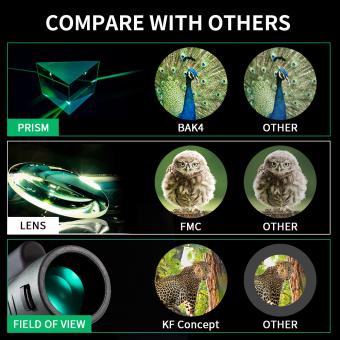What Is Transient Monocular Vision Loss ?
Transient monocular vision loss refers to a temporary loss of vision in one eye. It is characterized by a sudden and brief episode of vision impairment that typically lasts for a few seconds to a few minutes. This condition can be caused by various factors, including a temporary interruption of blood flow to the eye, such as in the case of a retinal artery occlusion or embolism. Other potential causes include migraines, optic neuritis, or certain medications. It is important to seek medical attention if experiencing transient monocular vision loss, as it may indicate an underlying health issue that requires further evaluation and treatment.
1、 Definition and Causes of Transient Monocular Vision Loss
Transient monocular vision loss (TMVL) refers to a temporary loss of vision in one eye that typically lasts for a few seconds to minutes. It is a concerning symptom that can be indicative of an underlying medical condition and should be evaluated promptly by a healthcare professional.
TMVL can be caused by various factors, including vascular disorders, ocular conditions, and neurological issues. One common cause is embolic disease, where a small clot or debris temporarily blocks blood flow to the eye. This can occur due to emboli originating from the heart or carotid arteries. Other vascular causes include transient ischemic attacks (TIAs) or mini-strokes, which can affect the blood vessels supplying the eye.
Ocular causes of TMVL include conditions such as amaurosis fugax, which is characterized by temporary vision loss due to reduced blood flow to the retina. This can be caused by atherosclerosis or inflammation of the blood vessels. Other ocular causes may include retinal artery or vein occlusion, optic neuritis, or glaucoma.
Neurological causes of TMVL can include migraines, which can cause temporary visual disturbances known as visual auras. Additionally, conditions affecting the optic nerve or visual pathways, such as multiple sclerosis, can also lead to TMVL.
It is important to note that TMVL should never be ignored, as it can be a warning sign of more serious conditions, such as impending stroke or retinal detachment. Prompt evaluation by a healthcare professional is crucial to determine the underlying cause and initiate appropriate treatment.
The latest point of view suggests that TMVL should be considered a medical emergency, and individuals experiencing this symptom should seek immediate medical attention. Recent studies have highlighted the association between TMVL and an increased risk of stroke, emphasizing the importance of early intervention and preventive measures. Advances in imaging techniques, such as optical coherence tomography and magnetic resonance imaging, have improved the ability to diagnose and manage the underlying causes of TMVL.
In conclusion, transient monocular vision loss is a temporary loss of vision in one eye that can be caused by various vascular, ocular, and neurological conditions. It is essential to promptly evaluate and diagnose the underlying cause to prevent potential complications. Seeking immediate medical attention is crucial, as recent research has emphasized the association between TMVL and an increased risk of stroke.

2、 Symptoms and Duration of Transient Monocular Vision Loss
Transient monocular vision loss (TMVL) refers to a temporary loss of vision in one eye that typically lasts for a few seconds to minutes. It is a concerning symptom that can be indicative of an underlying medical condition and should be evaluated by a healthcare professional.
TMVL can manifest as a sudden, painless loss of vision in one eye, often described as a curtain or veil descending over the visual field. It can occur spontaneously or be triggered by certain activities such as exercise, straining, or changes in body position. The affected eye may also experience other visual disturbances such as flickering lights or blind spots.
The most common cause of TMVL is embolic occlusion, where a small clot or debris temporarily blocks the blood flow to the retina or optic nerve. Other potential causes include vasospasm, migraine, or inflammation of the blood vessels supplying the eye. In some cases, TMVL may be a warning sign of an impending stroke or transient ischemic attack (TIA).
It is crucial to seek medical attention promptly when experiencing TMVL, as it can be a sign of an underlying vascular condition that requires immediate intervention. A comprehensive evaluation by a healthcare professional may include a thorough medical history, physical examination, and diagnostic tests such as blood tests, imaging studies, or an ophthalmologic examination.
Recent research has highlighted the importance of identifying the underlying cause of TMVL to guide appropriate management and prevent future episodes. Advances in imaging techniques, such as optical coherence tomography (OCT) and magnetic resonance imaging (MRI), have improved our ability to detect subtle changes in the retina and optic nerve, aiding in the diagnosis and management of TMVL.
In conclusion, transient monocular vision loss is a temporary loss of vision in one eye that can be caused by various underlying conditions. Prompt evaluation by a healthcare professional is essential to determine the cause and appropriate management.

3、 Risk Factors and Prevention of Transient Monocular Vision Loss
Transient monocular vision loss (TMVL) refers to a temporary loss of vision in one eye that typically lasts for a few seconds to a few minutes. It is a concerning symptom that can be indicative of an underlying vascular or neurological condition. TMVL is often described as a curtain or veil descending over the affected eye, resulting in a partial or complete loss of vision.
There are several risk factors associated with TMVL. One of the most common causes is embolic disease, where a blood clot or debris blocks the blood vessels supplying the retina. This can occur due to conditions such as carotid artery disease, atrial fibrillation, or atherosclerosis. Other risk factors include hypertension, diabetes, smoking, and hyperlipidemia.
Prevention of TMVL involves addressing the underlying risk factors. Lifestyle modifications such as maintaining a healthy weight, regular exercise, and a balanced diet can help reduce the risk of developing conditions like hypertension and diabetes. Smoking cessation is crucial, as smoking is a major risk factor for vascular diseases. Additionally, managing conditions like atrial fibrillation and atherosclerosis through appropriate medical interventions can also help prevent TMVL.
The latest point of view on TMVL emphasizes the importance of prompt evaluation and management. TMVL should never be ignored, as it can be a warning sign of a more serious condition, such as a transient ischemic attack (TIA) or retinal artery occlusion. Immediate medical attention is necessary to determine the underlying cause and initiate appropriate treatment to prevent further vision loss or potential stroke.
In conclusion, TMVL is a temporary loss of vision in one eye that can be caused by various vascular or neurological conditions. Identifying and managing the underlying risk factors is crucial in preventing TMVL. Prompt evaluation and treatment are essential to prevent potential complications and preserve vision.

4、 Diagnosis and Evaluation of Transient Monocular Vision Loss
Transient monocular vision loss (TMVL) refers to a temporary loss of vision in one eye that typically lasts for a few seconds to minutes. It is a concerning symptom that requires prompt evaluation as it may indicate an underlying serious condition. TMVL can be caused by various factors, including vascular, embolic, or non-vascular causes.
Vascular causes of TMVL include transient ischemic attacks (TIAs) and amaurosis fugax. TIAs are brief episodes of neurological dysfunction caused by temporary disruption of blood flow to a specific area of the brain. Amaurosis fugax is a similar condition that affects the eye, causing temporary vision loss due to reduced blood flow to the retina. Both conditions are often associated with underlying cardiovascular diseases, such as carotid artery stenosis or atrial fibrillation.
Embolic causes of TMVL involve the sudden blockage of a retinal artery by an embolus, which is typically a small blood clot or debris. This can occur due to various sources, including cardiac emboli from conditions like atrial fibrillation or carotid artery emboli from atherosclerotic plaques.
Non-vascular causes of TMVL include optic nerve disorders, such as optic neuritis or ischemic optic neuropathy, as well as ocular conditions like retinal migraine or retinal detachment.
The diagnosis and evaluation of TMVL involve a comprehensive assessment of the patient's medical history, physical examination, and specialized tests. These tests may include visual acuity assessment, visual field testing, fundoscopy, and imaging studies like carotid ultrasound or magnetic resonance imaging (MRI) of the brain and orbits.
It is important to note that the latest point of view on TMVL emphasizes the need for a thorough evaluation to identify the underlying cause. Prompt diagnosis and appropriate management can help prevent future episodes and reduce the risk of permanent vision loss. Additionally, advances in imaging techniques, such as optical coherence tomography (OCT), have improved the ability to detect subtle changes in the retina and optic nerve, aiding in the diagnosis and management of TMVL.
In conclusion, TMVL is a temporary loss of vision in one eye that can be caused by various vascular, embolic, or non-vascular factors. It requires prompt evaluation to identify the underlying cause and initiate appropriate management. The latest point of view emphasizes the importance of a comprehensive assessment and the use of advanced imaging techniques to improve diagnosis and treatment outcomes.





























